Auckland – New Zealand’s Oceanic Metropolis
Almost 40% of all the people in New Zealand live in the Auckland metro area, making it one of the most dominant cities vis a vis the country as a whole and the city next in line, of any country in the world. Christchurch, the second largest city at just under 400,000 is less than 25% as large. Contrast that to Canada, where our largest metro area, the Greater Toronto Area at 6.2 million, represents only about 15% of all Canadians and is 30% larger than the second metro area, Montreal at 4.2 million. This anomaly has some interesting consequences, the first of which is that no other city in New Zealand or Oceania for that matter, remotely resembles Auckland.
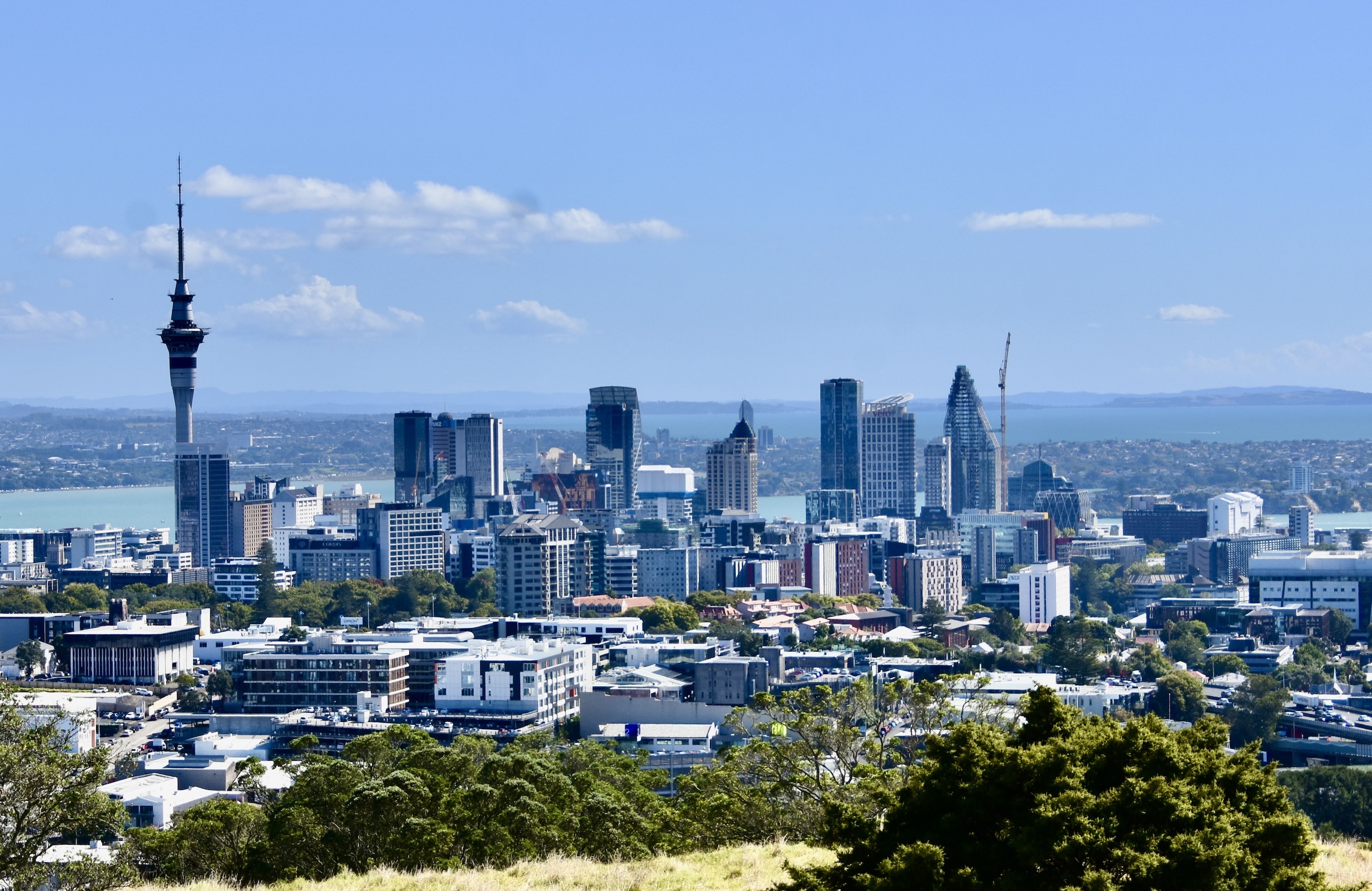
The second is that its population is much more diverse than the rest of the country. Well over 50% of immigrants to New Zealand choose to live in Auckland. The result is that the first time visitor to New Zealand (that would be me), might very well get a very skewed idea of the country from just visiting Auckland. Now don’t get me wrong, Auckland is a beautiful city and a must visit on any trip to New Zealand, but it’s a classic case of not judging a book by its cover.
With that said, Alison and I had two quick visits to Auckland, one day a week before we joined the Adventures Abroad tour there and then two days as part of the tour, for a total of three nights. In this post I’ll combine the highlights from both visits.
In a previous post I described the arrival process in New Zealand which almost certainly will start at Auckland airport, so I won’t repeat it here. In another post, I gave my reasons for recommending first time visitors to New Zealand sign up for the Adventures Abroad introductory tour to this fabulous country. It includes pretty well all of the top must see attractions and experiences in the country and much more. Finally, before getting deeper into Auckland, I really, really urge anyone who is going on the AA tour or with any other company, to come at least one day if not two early. It’s one hell of a long way from either North America or Europe to New Zealand and will usually involve multiple flights. Not only will you need time to get acclimatized to the time change and change of season, but should your luggage go on a walkabout, there is time to get it back. Lastly, Auckland is a great city to explore on foot, especially the waterfront and you won’t get much of a chance to do that if you arrive on the day the tour starts.
History of Auckland
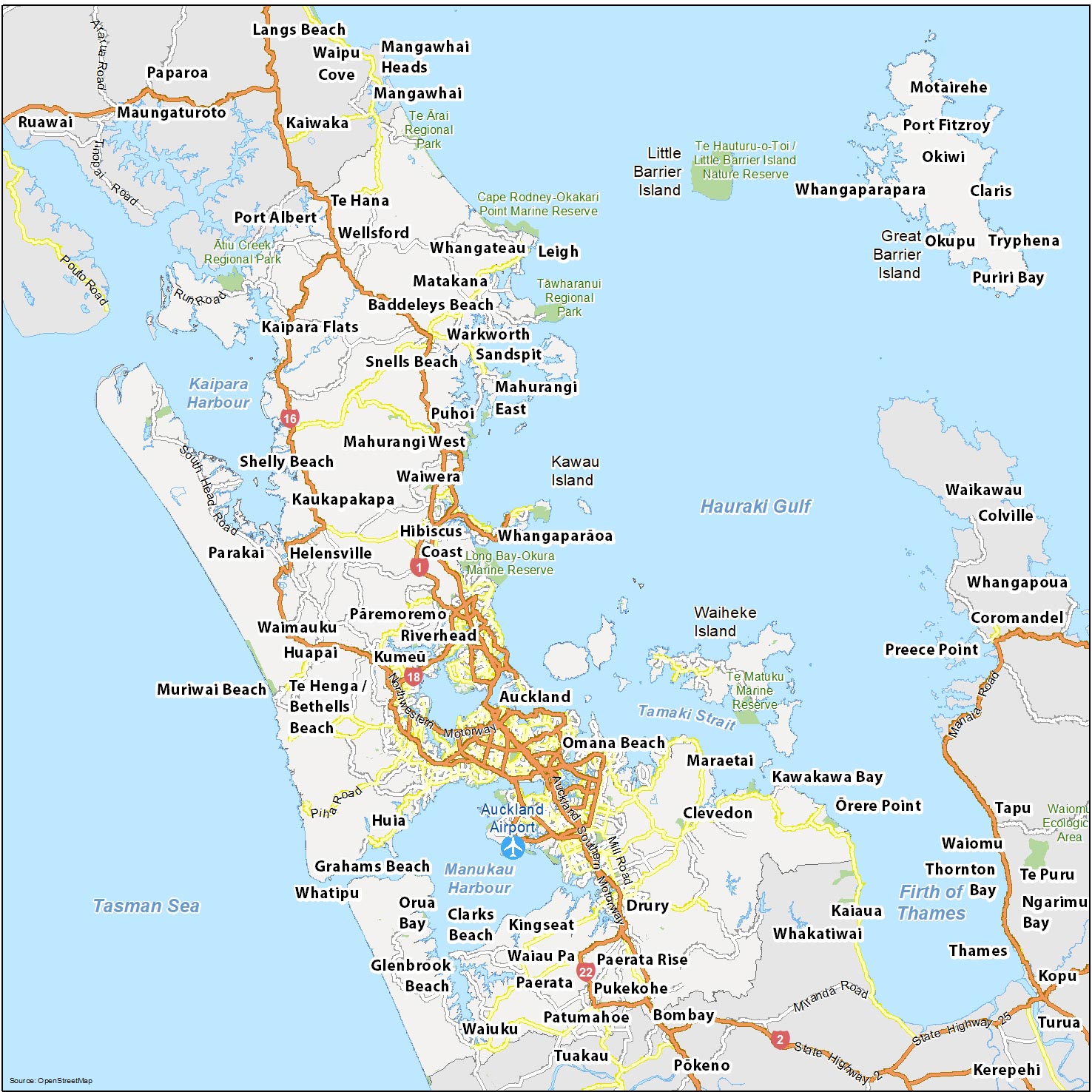
Auckland has a location that is unique not only in New Zealand, but pretty well anywhere as it lies on an isthmus that has harbours both on the Pacific side of North Island and on the Tasman Sea to the west. Looking at the map, one can see that it would be a very strategic place for any group hoping to exert dominion over the lands to the north to control. The topography of the area is composed of a number of dormant volcanic cones that are not only very fertile, but perfect places to build fortifications which is exactly what the first Maori settlers did starting in about 1350. They named the place Tāmaki Makaurau which translates as ‘land desired by many’.
Over the next 300 years Tāmaki became the largest Maori settlement in New Zealand with tens of thousands occupying the isthmus and the islands nearby. The very desirability of the lands that became Auckland was inevitably the cause of envy and friction from other Maori tribes to the north and south. Between 1740 and 1750 a series of attacks led to the capture of the forts or pās that had protected the area and when the principal local Maori chief Kiwi Tāmaki was killed, control of the area was ceded to the invaders. It wasn’t long after that that the first Europeans started to arrive in New Zealand and the sale of firearms to various Maori tribes led to the Musket Wars which between 1818 and 1840 saw at least 20,000 killed in intertribal warfare that ultimately wreaked havoc with not only the Maori population, but their ownership of land as well. Unlike many other Indigenous peoples, the Maori have a strong sense of real property rights and who owns what. That ownership can be by way of long term settlement, but equally by right of conquest. During our stay in New Zealand we saw numerous examples of lands acquired by one Maori tribe or more properly ‘iwi’, from another by way of conquest. The Musket Wars created many changes of ownership in this manner and created ongoing disputes about which iwi had the right to sell or grant land to the new settlers coming from Europe, Australia and elsewhere.
The violence wreaked by the Musket Wars, the increasing lawlessness of some of the newly founded settlements like Russell and Kerikeri and French aspirations to acquire New Zealand in the 1830’s led to a request for protection by several Maori chiefs (rangatira) to the British Crown. The upshot was that sovereignty of New Zealand was ceded to Britain in the Treaty of Waitangi in 1840, of which I will have a lot more to say in a future post. The first governor of this new colony, William Hobson chose the Tāmaki to be the new capital and renamed it for the First Lord of the Admiralty, George Eden, Earl of Auckland. This was a process remarkably similar to how the name of my home city, Halifax, Nova Scotia came to be. It was named after the president of the Board of Trade, George Montagu-Dunk, Earl of Halifax.
Auckland lost its position as capital to Wellington in 1865, but not its prominence as New Zealand’s principal port and centre of commerce. It has grown steadily and is currently by far the leading educational centre of the country with its two universities having a combined enrolment of over 70,000 students, many of them international. This, plus its popularity with recent immigrants is what gives the city its diverse appearance with large Chinese, south Asian, Filipino and Polynesian populations. It is also the financial centre of New Zealand with all major Kiwi banks based in the city. Finally, it is the telecommunications hub of New Zealand as exemplified by the city’s most famous structure, the Sky Tower which dominates the Auckland skyline.

Going early will allow time to visit the Sky Tower which offers a myriad of attractions including a sky walk similar to what I did with Dale Jr. and Lenore a few years ago at the CN Tower in Toronto. If that isn’t enough of an adrenalin rush, you can actually jump from the tower and fall 192 metres, or more if the rope breaks.
Ok, let’s begin our visit to Auckland with a stroll along the city’s waterfront which I think is the most interesting part of the city. Very similar to Halifax and many other seaports around the world, Auckland’s waterfront has been undergoing a transformation over the past two decades from a strictly commercial enterprise to a combination of a working waterfront and a tourist destination.
The Quay Street Historic Area is centred around the modern ferry terminal that takes cars and passengers to over a dozen different destinations. Right beside it is the handsome looking Ferry Building which is one of a number of historic buildings on the waterfront.
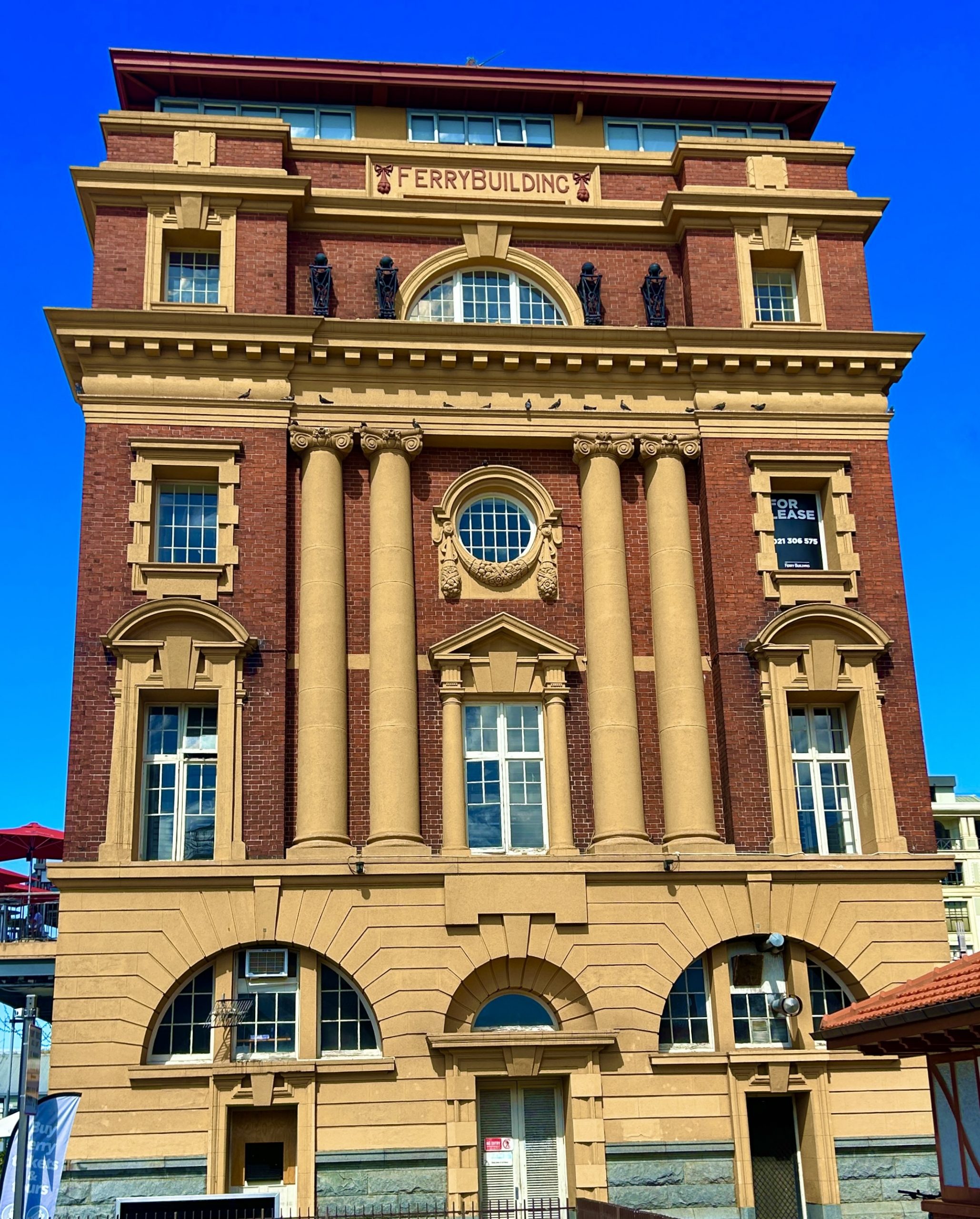
If there is a beating heart to Auckland, it is definitely along the waterfront where joggers, cyclists, families with strollers and dogs, and just plain tourists like Alison and me intermingle and enjoy the sights and sounds of a clean, safe and happy environment. Yes, I know that sounds cliched, but in the case of Auckland, it’s accurate.
This is a view of the Auckland skyline from the waterfront promenade. Note how the Ferry Building contrasts with the modern architecture, casting its shadow on the Deloitte Centre.
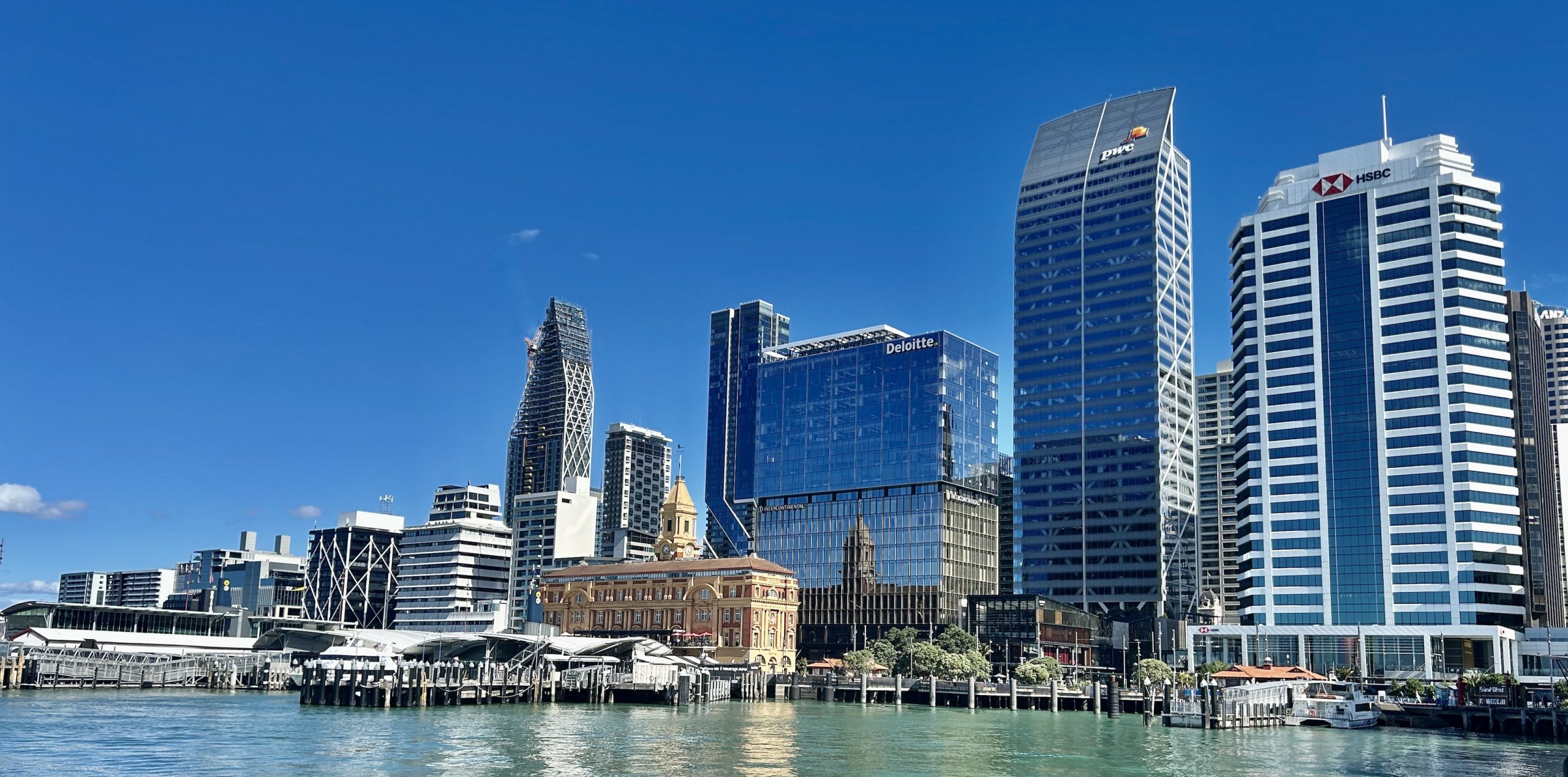
One of the principal attractions of the Auckland waterfront is the New Zealand Maritime Museum that features the country’s nautical history which, being entirely surrounded by ocean on all sides, is substantial. Moored nearby is the tall ship Spirit of New Zealand which was purpose built in 1986 to train young kiwis in the art of sailing.
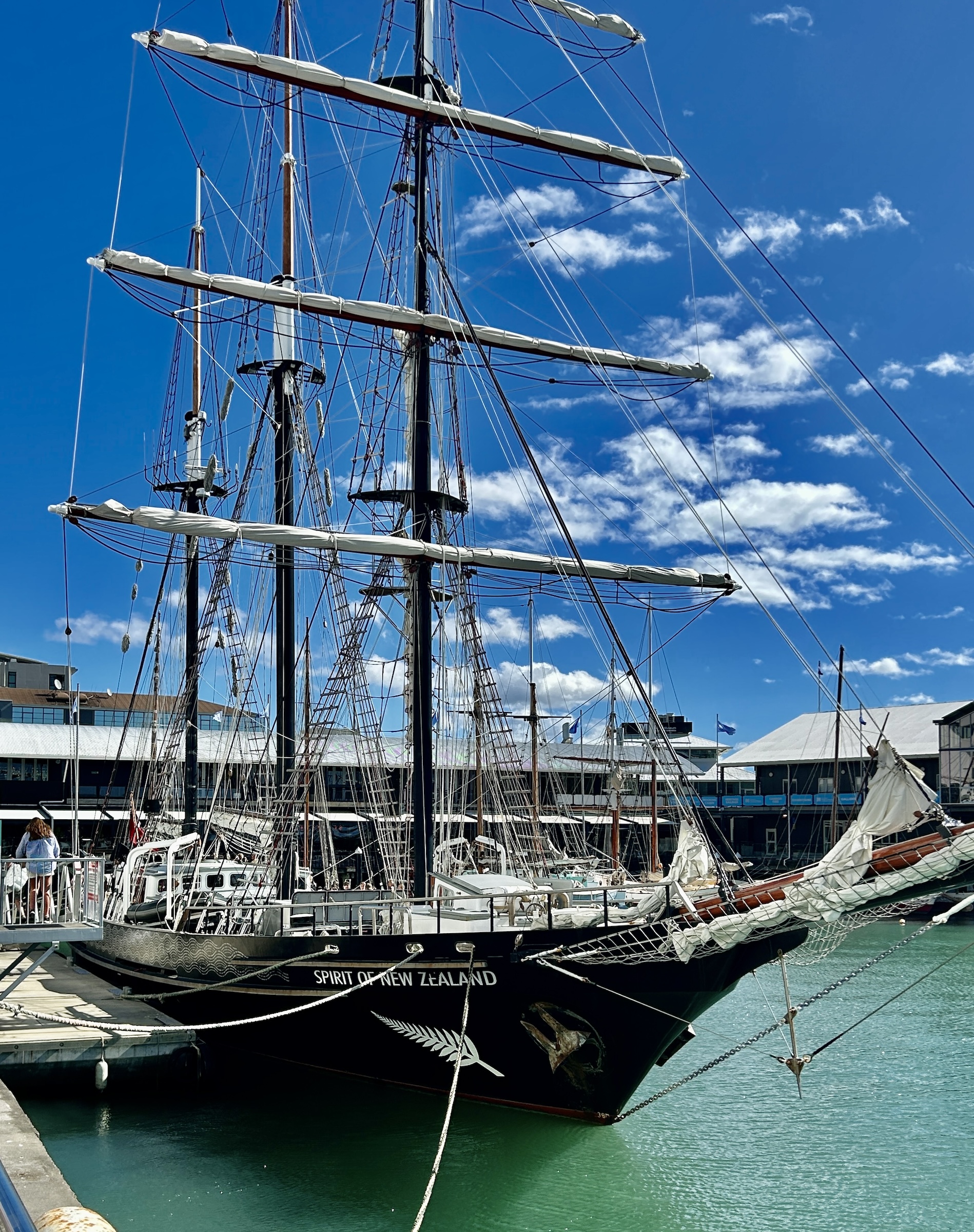
Continuing past the Maritime Museum you can do a waterfront loop around Viaduct Basin by using the Wynyard Crossing drawbridge. Here you will get your first realization that New Zealanders are truly crazy about boats, particularly sailboats. There are literally hundreds of them in Viaduct Basin and over your time in this country you will see marinas crammed with sailboats in every town, no matter how small, that has ocean frontage.
If looking at sailboats is not your thing, how about super yachts? At the far end of your walk you can view some of these behemoths at the Silo Superyacht marina.
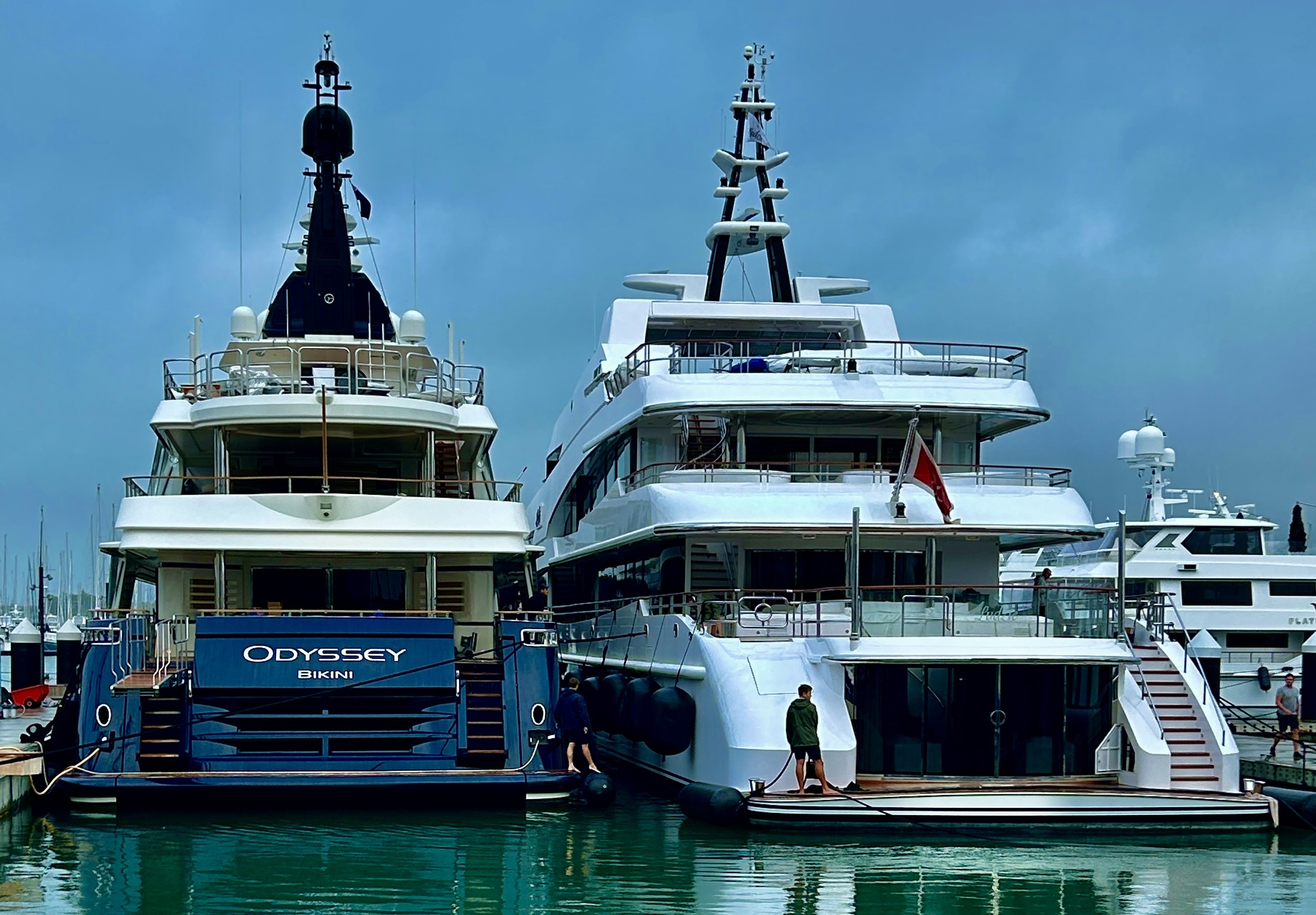
The Auckland Fish Market in this quarter is not a fish marker per se, but rather mostly a food court, but there are a couple of fish mongers where you can get your first look at New Zealand’s unique green-lipped mussels. Found only in New Zealand, there are many claims of the medicinal value of eating these bivalves, mostly scientifically unproven, but heck they’re mussels and delicious, so who cares if they help with osteoarthritis or not?
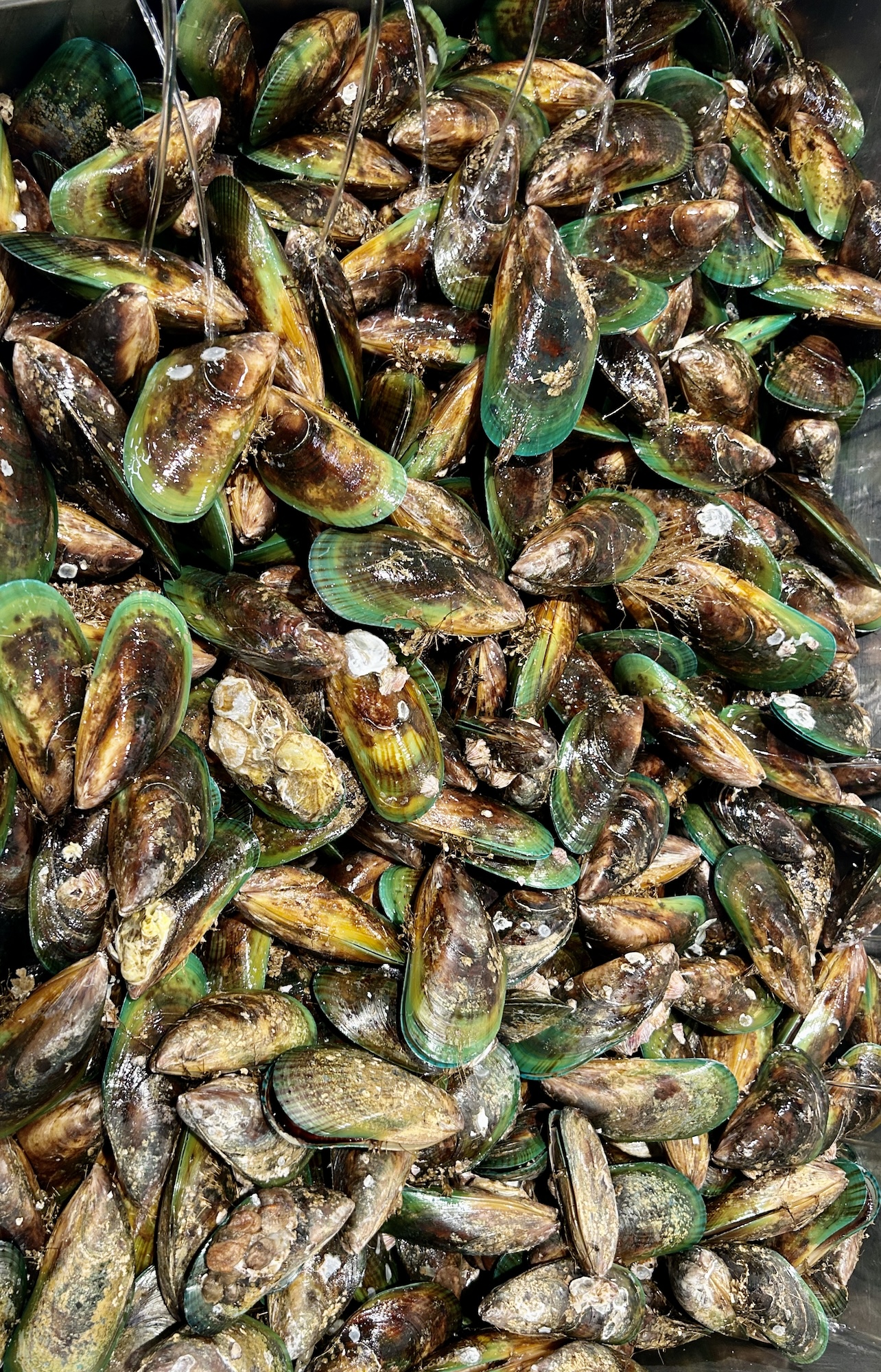
Another attraction of the Auckland waterfront are the many restaurants and bars, serving a great variety of international cuisines, but Alison and I are up for our first taste of New Zealand seafood, which will be a staple for our entire visit.
Grabbing a seat at The Shucker Brothers in the Ferry Building I had my first New Zealand oysters done tempura style. Simply amazing!
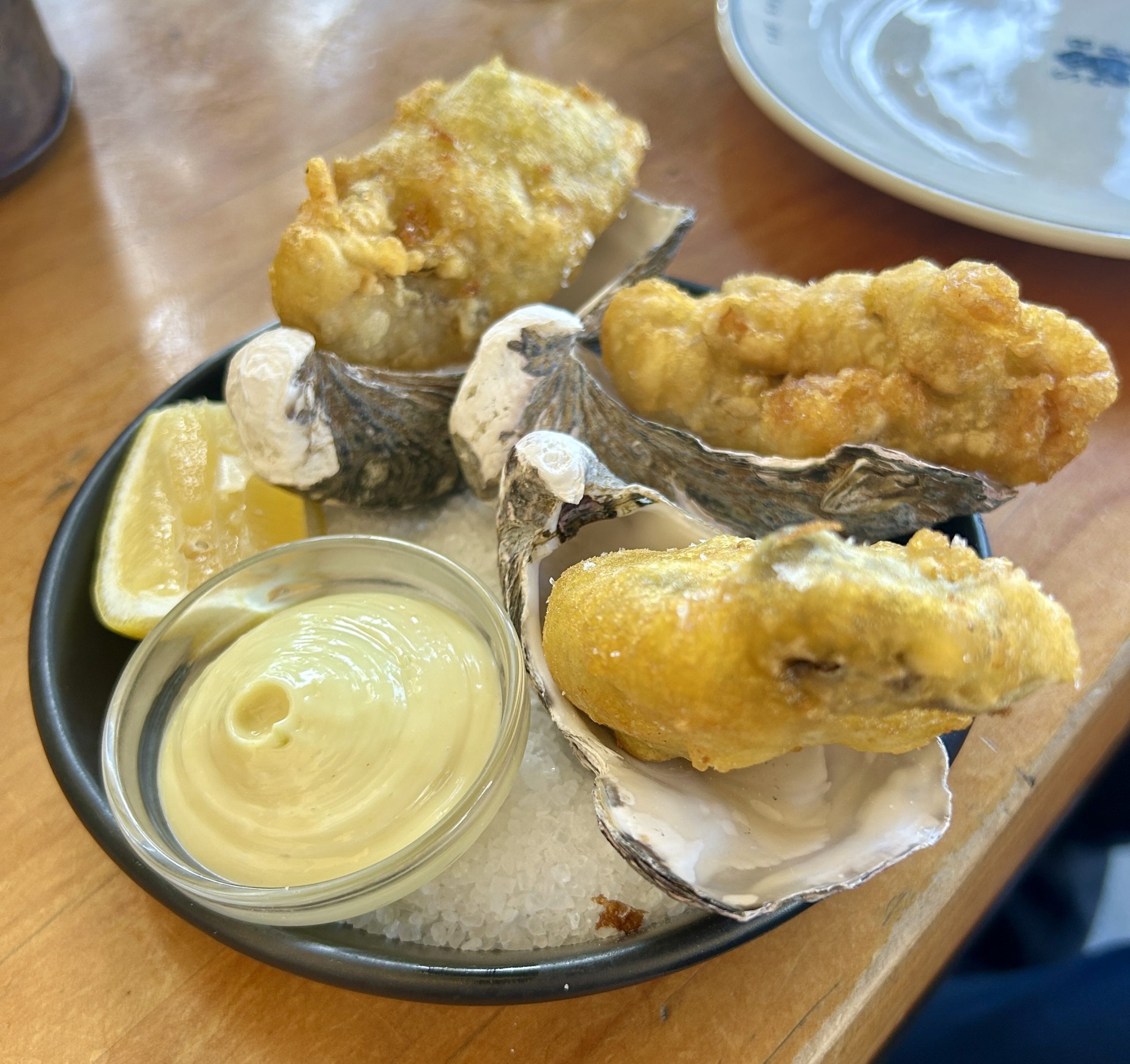
The spicy prawns were a lot more messy to eat, with had a nice degree of heat to them.
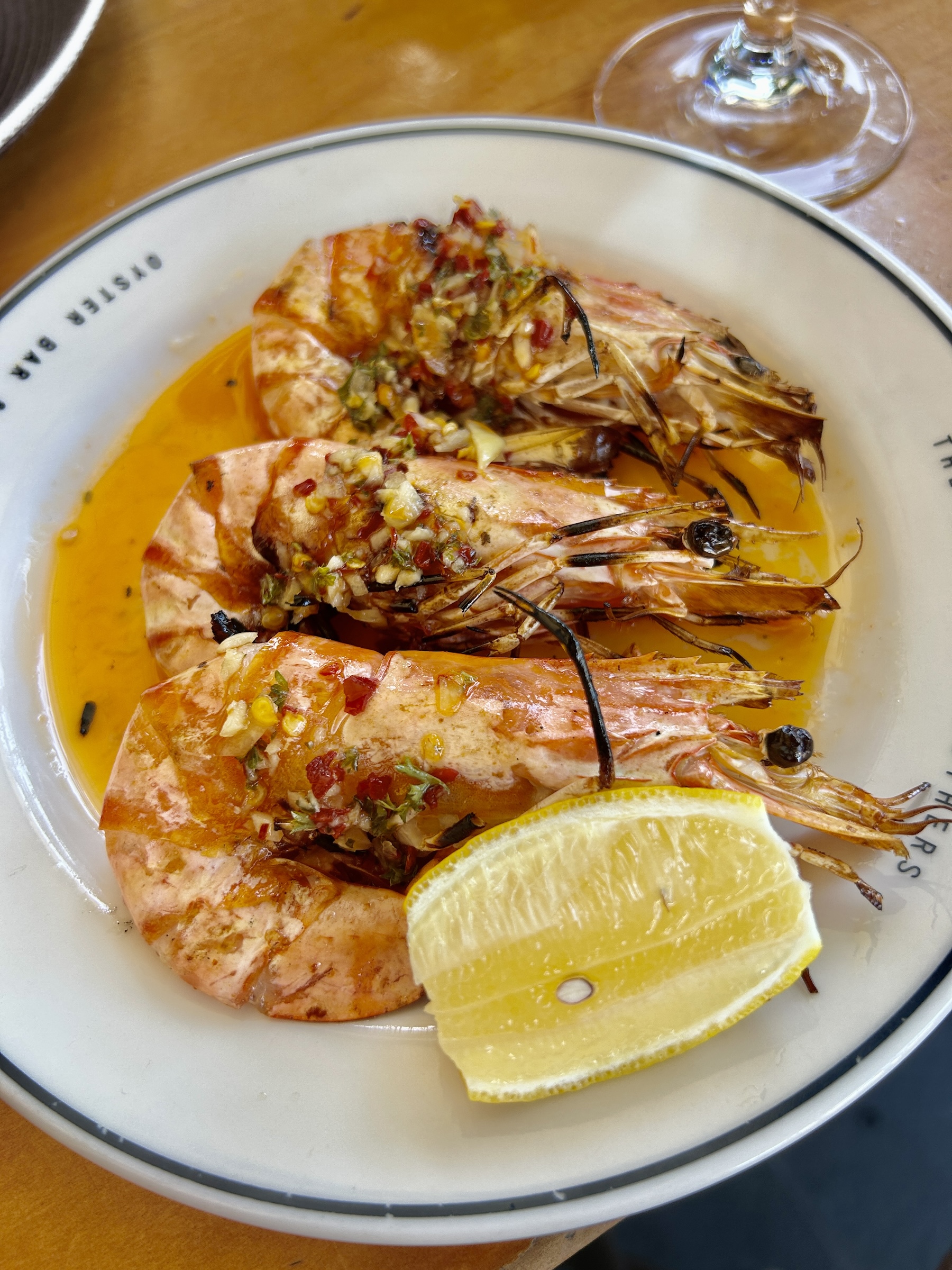
If you don’t have the opportunity to get to the Auckland waterfront before joining the Adventures Abroad tour, there will be a chance after visiting the Auckland War Memorial Museum which is where the tour of Auckland ends in the early afternoon. There will be at least 3-4 hours of free time after that.
City Tour with Adventures Abroad
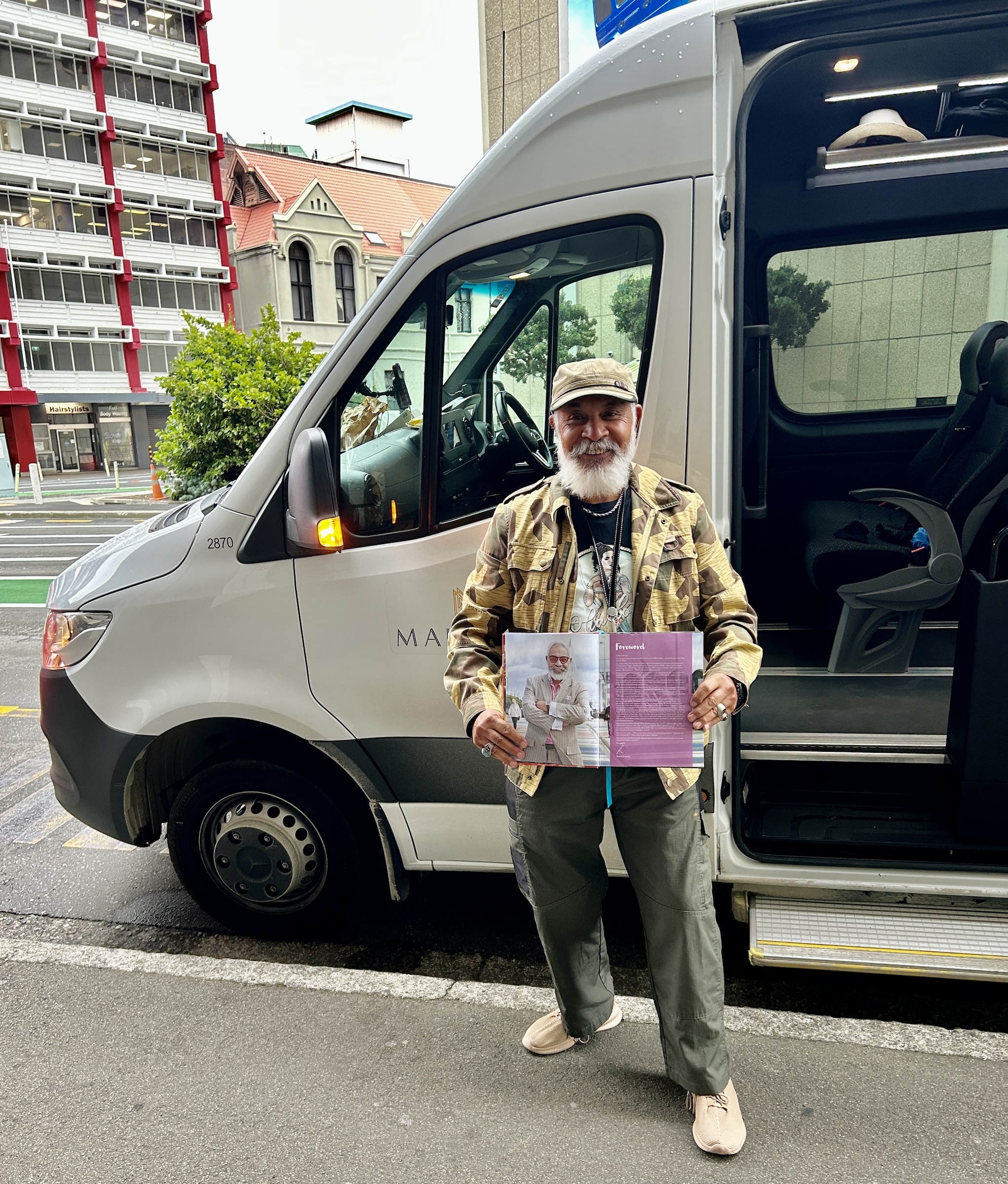
Our tour of Auckland began by meeting our driver, Patrick Lee-Lo who is also a chef and cookbook author. Whether by design or good luck, AA always seems to have interesting local drivers who have varying backgrounds and always have extensive knowledge of the areas they will be taking us to.
We started off by crossing the Auckland Harbour bridge to visit the tony Takapuna district with its million dollar condos with views across the water to Rangitoto Island, the largest of Auckland’s 48 volcanic cones. We stopped at Takapuna beach where a young guy was assembling a hydrofoil which he said he was going to ride across to Rangitoto. Given the height of the waves in the strait that seemed nuts, but he said he’d make it there in 20 minutes. Hope he did.
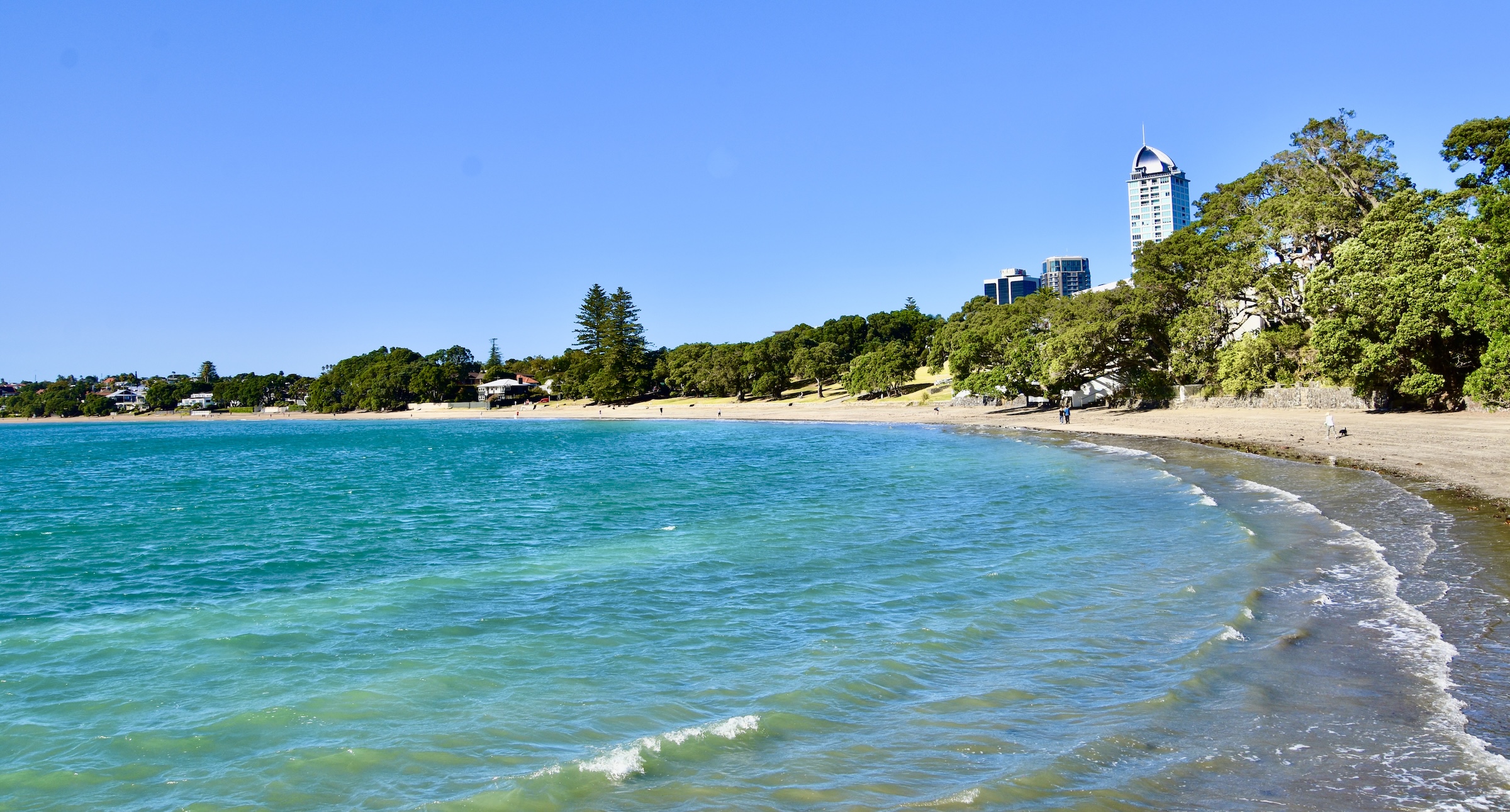
Returning across the bridge we circled under it to stop at the Royal New Zealand Yacht Squadron which is arguably the most prestigious on the planet. As I noted earlier, New Zealanders are crazy about sailing and there is no better evidence of their prowess than the fact that this yacht squadron wrested the America’s Cup from the reigning American champions in San Francisco in 2017 and has successfully defended it twice since. This trophy, the ultimate prize in yachting that has been contested since 1851, now resides behind the doors of this modest structure on the Auckland waterfront.
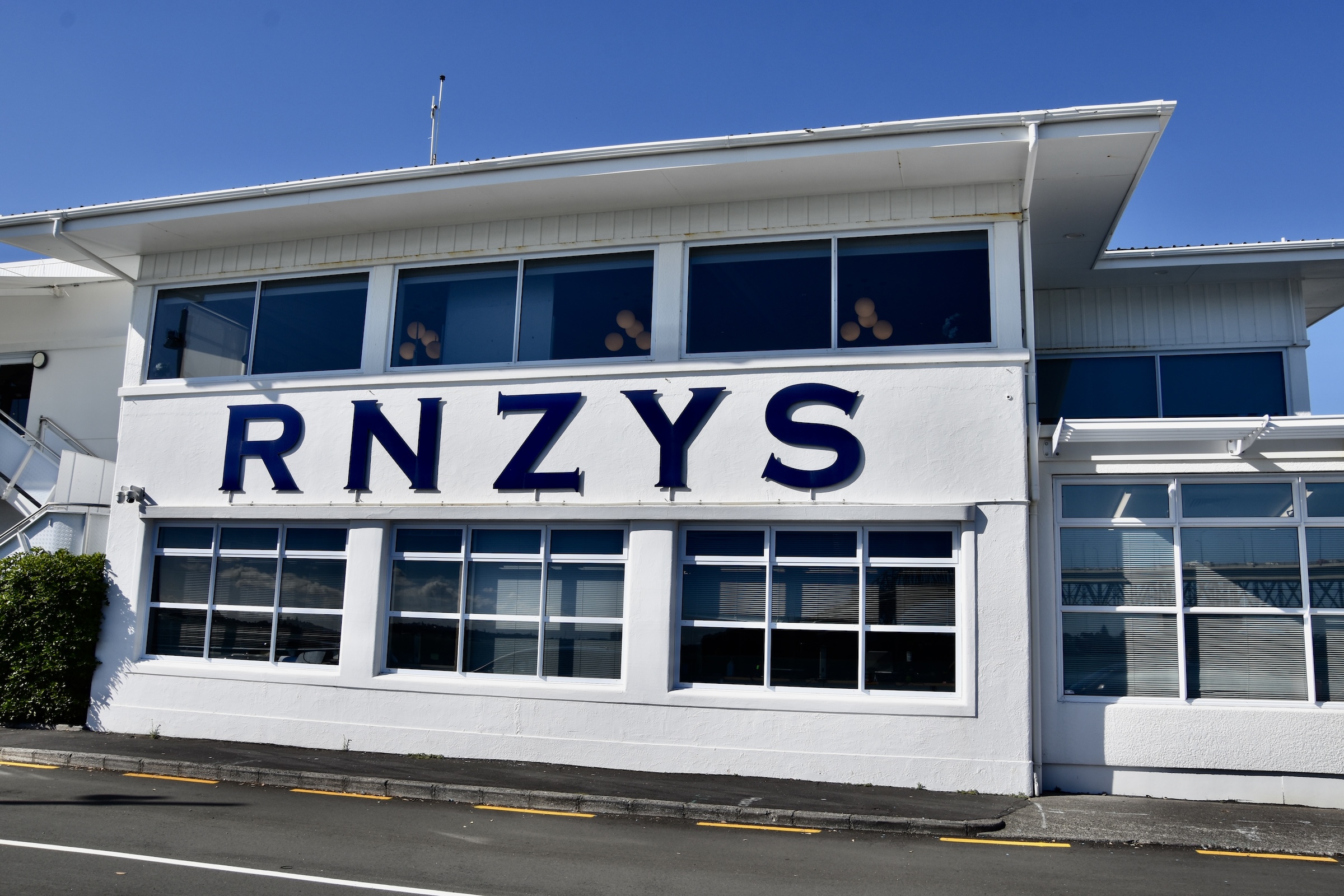
This is also a great spot from which to get a photo of the Auckland Harbour bridge which opened in 1959 and has since been expanded from four to eight lanes including a bus lane which allowed us to avoid the incoming traffic jam on the way back to the main part of the city.
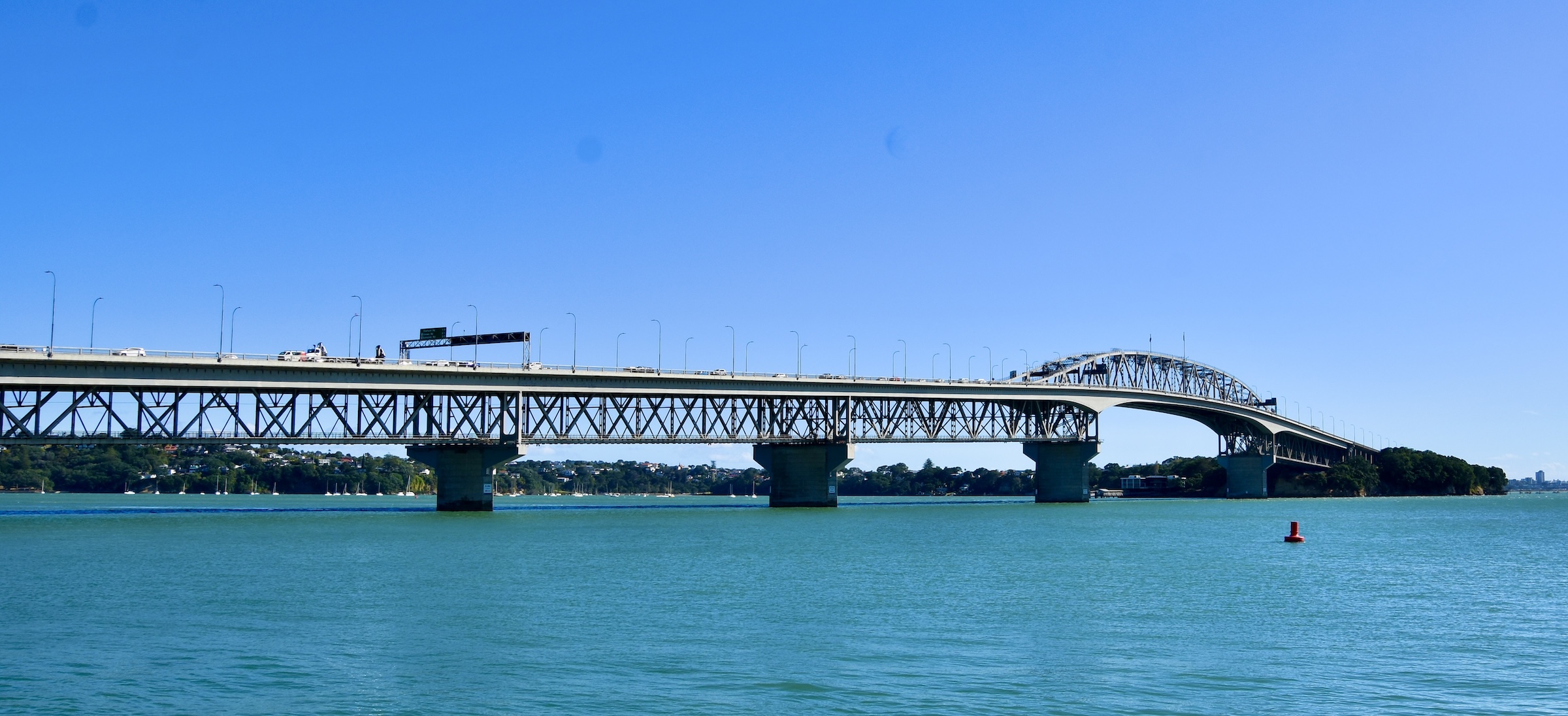
After reboarding the bus Patrick drove is to the parking lot at the bottom of the circular path that leads to the summit of Maunagawhau/Mount Eden, the highest of the volcanic cones in the city proper. The use of both Maori and British names is the norm in New Zealand and seems a reasonable compromise. A place does not necessarily have to have only one name as it may mean different things to different cultures.
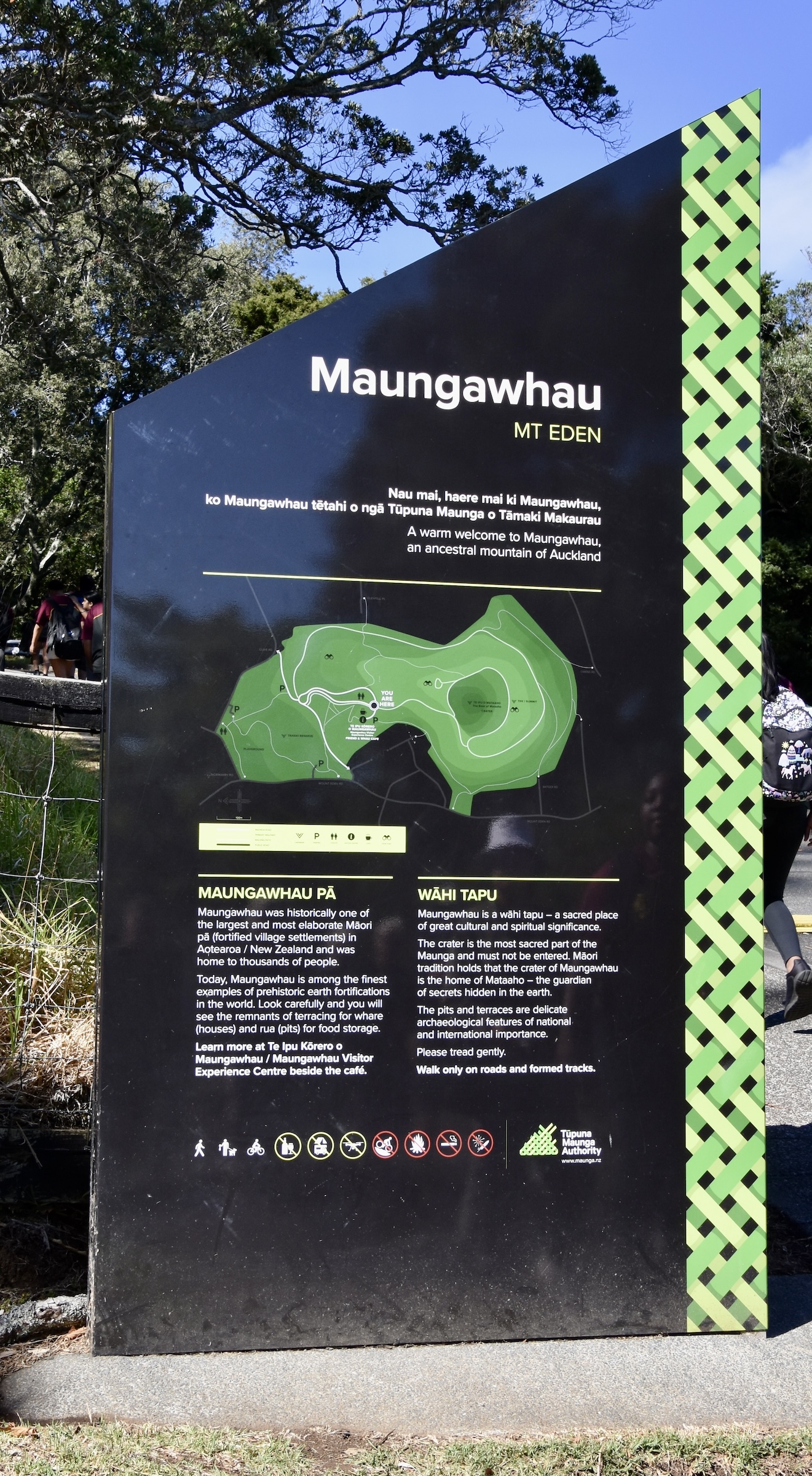
Maungawhau was once the second largest of all the Maori pas in the Auckland area and although it is basically a park today, it was once home to thousands of people. The boardwalk to the top and around the rim of the crater is quite recent and is meant to make sure visitors do not disturb the surrounding grounds which are considered sacred. It’s a leisurely walk to the top which is suitable for anyone who is reasonably fit.
The views from the top are the best in Auckland and everyone asked Chris Tripodi, our AA guide who I introduced in a previous post, to take their photo. In our case Chris made it a threesome.
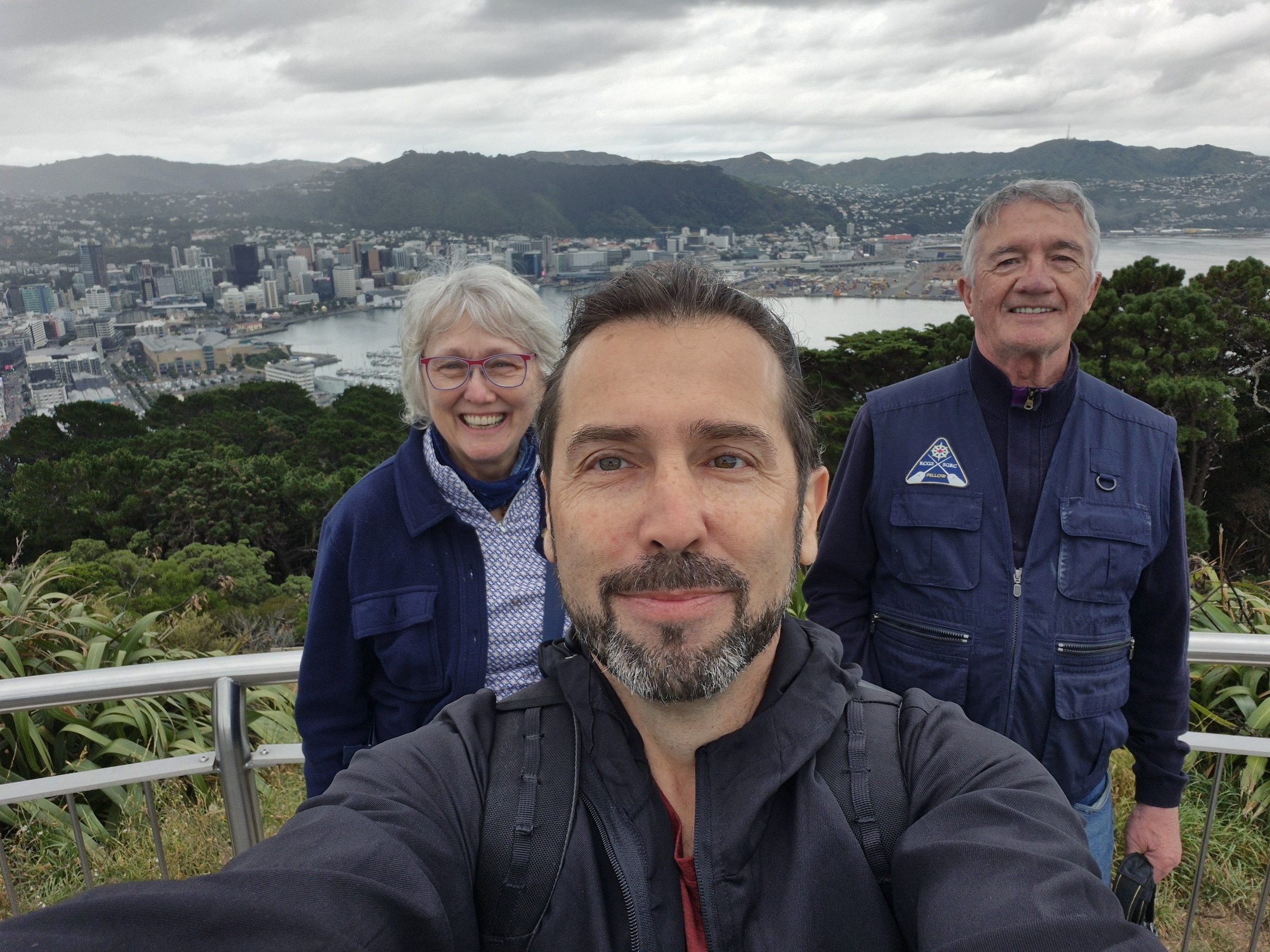
Opposite downtown Auckland you can look across to Maungakiekie/One Tree Hill which was the largest pa in Tāmaki. This was the final stronghold of Kiwi Tāmaki before he was killed by invading Maoris in the 1740s. The obelisk on top has a strange and pretty ironic back story.
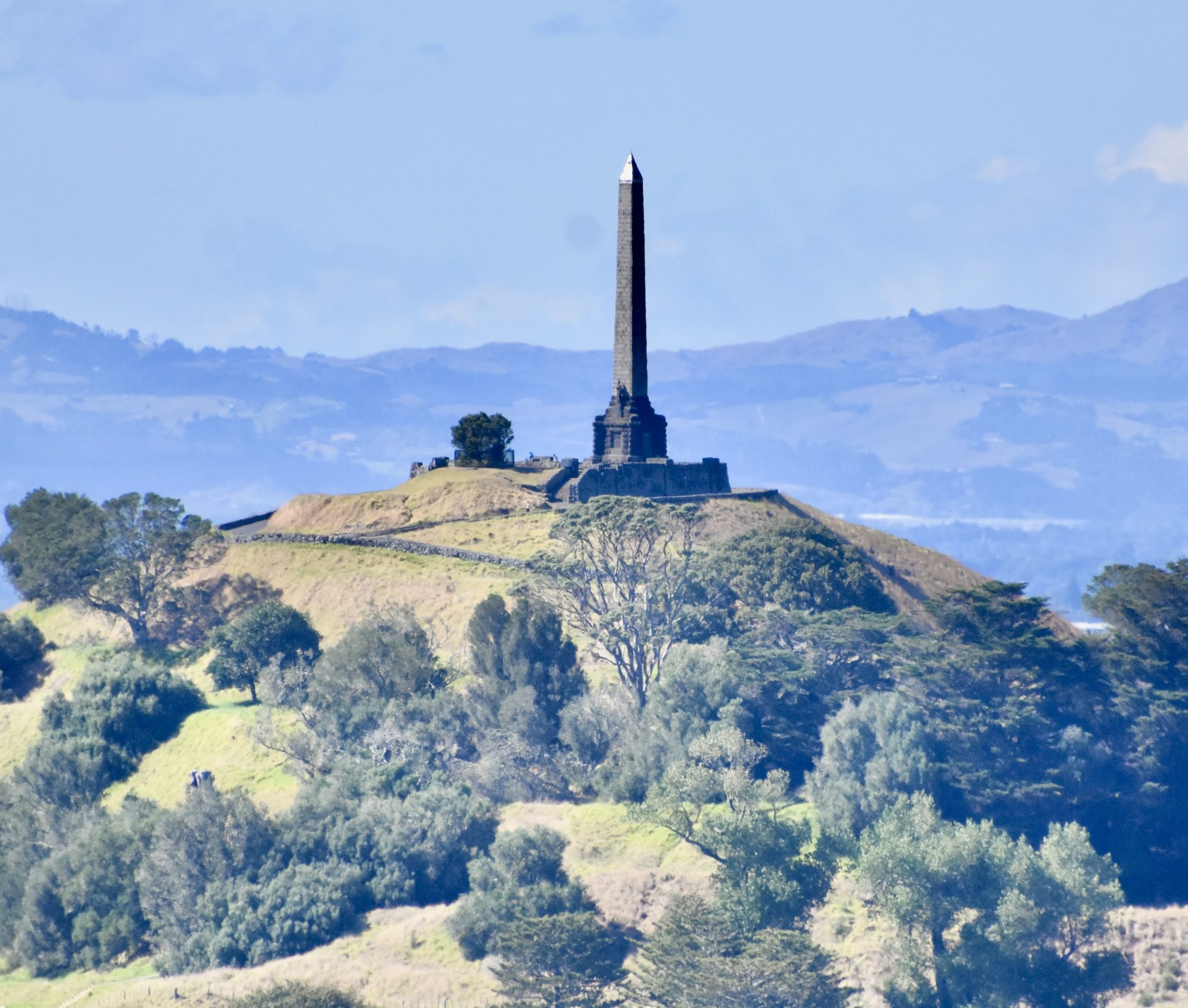
The obelisk was paid for by a bequest from Sir John Logan Campbell who emigrated to New Zealand in 1840. He was a great admirer of the Maori people, but fully expected that the Maori population would gradually die out or become absorbed with the European settlers. It was conceived as a memorial to the Maori nation, but when the city fathers finally got around to erecting it in the 1930’s, it was now apparent that the Maoris were not going anywhere, the monument was recast as a recognition of the significance the Maori have played in the history of New Zealand. Campbell also bequeathed the land upon which the obelisk stands to the city and in 2016 ownership was transferred to a trust administered by local Maori iwis.
Our penultimate stop on the bus tour of Auckland was another place that has a significant part to play in the continued settlement of Maori land claims along with recognition of the role that European settlers have had as well. Takaparawhau/Bastion Point offers more great views of Auckland from a promontory that, as the European name suggests, was once the site of fortifications guarding the mouth of Auckland Harbour.
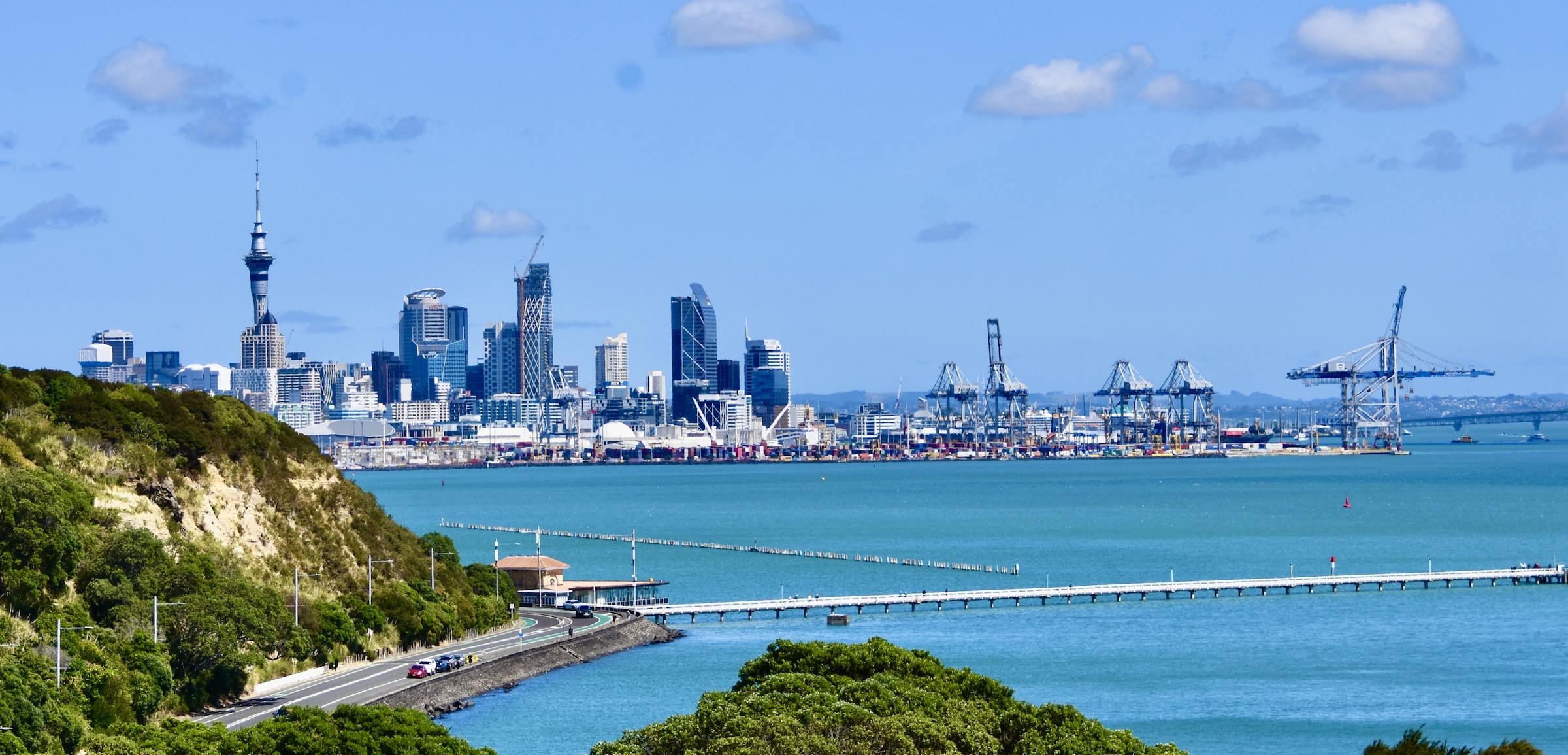
It was also the site of a sizeable Maori community whose land was basically seized without compensation in the name of public defence needs. Long story short, after decades of protests, court proceedings and political shenanigans, the land was returned to the descendants of the original owners in 1988. However, although it is technically private land it is still open to the general public most of whom come for the views and to visit the tomb of former Prime Minister Michael Joseph Savage, the first Labour Prime Minister of New Zealand and a revered figure in Kiwi history. I don’t think any of our Canadian Prime Ministers have anything like this.
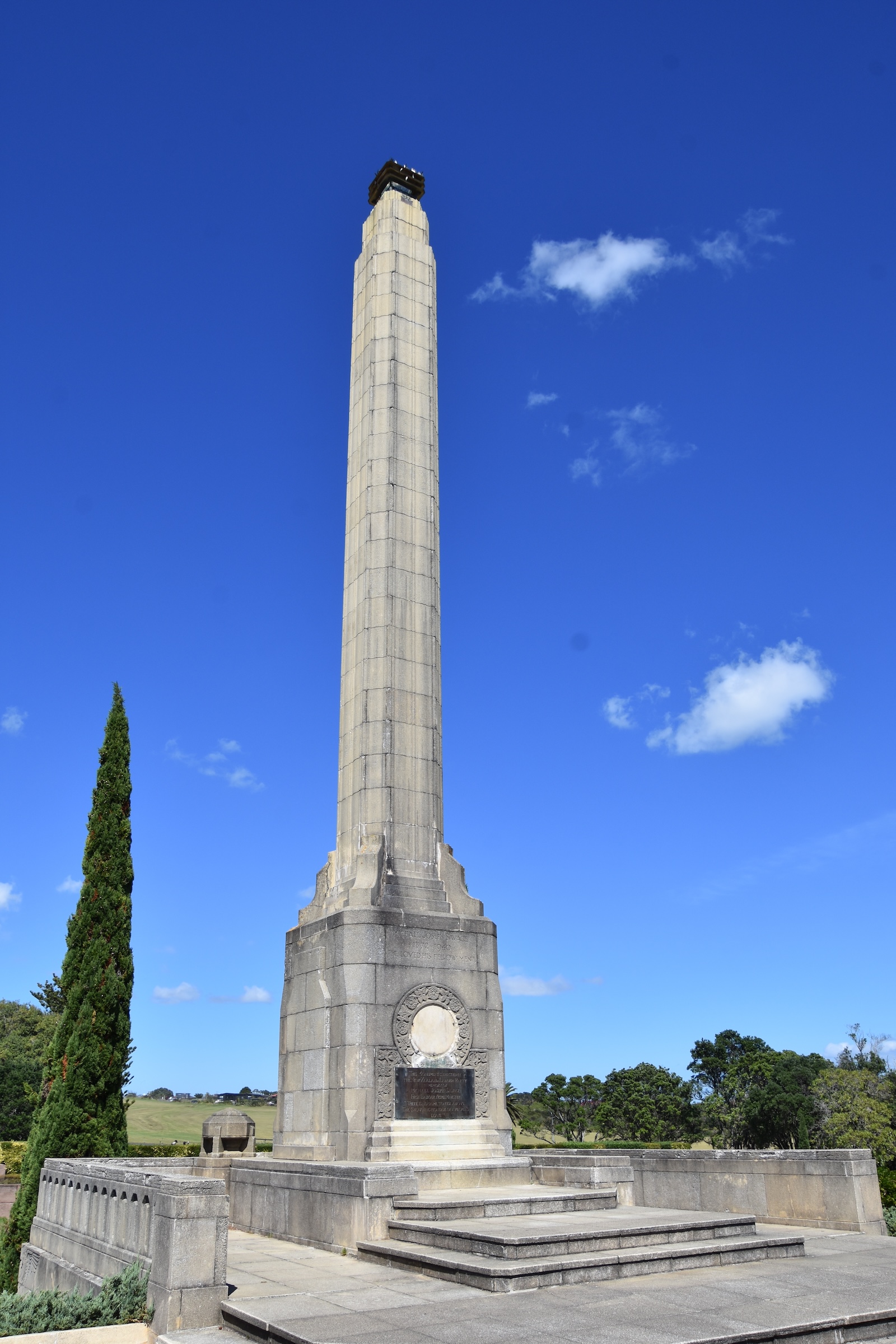
War Memorial Museum
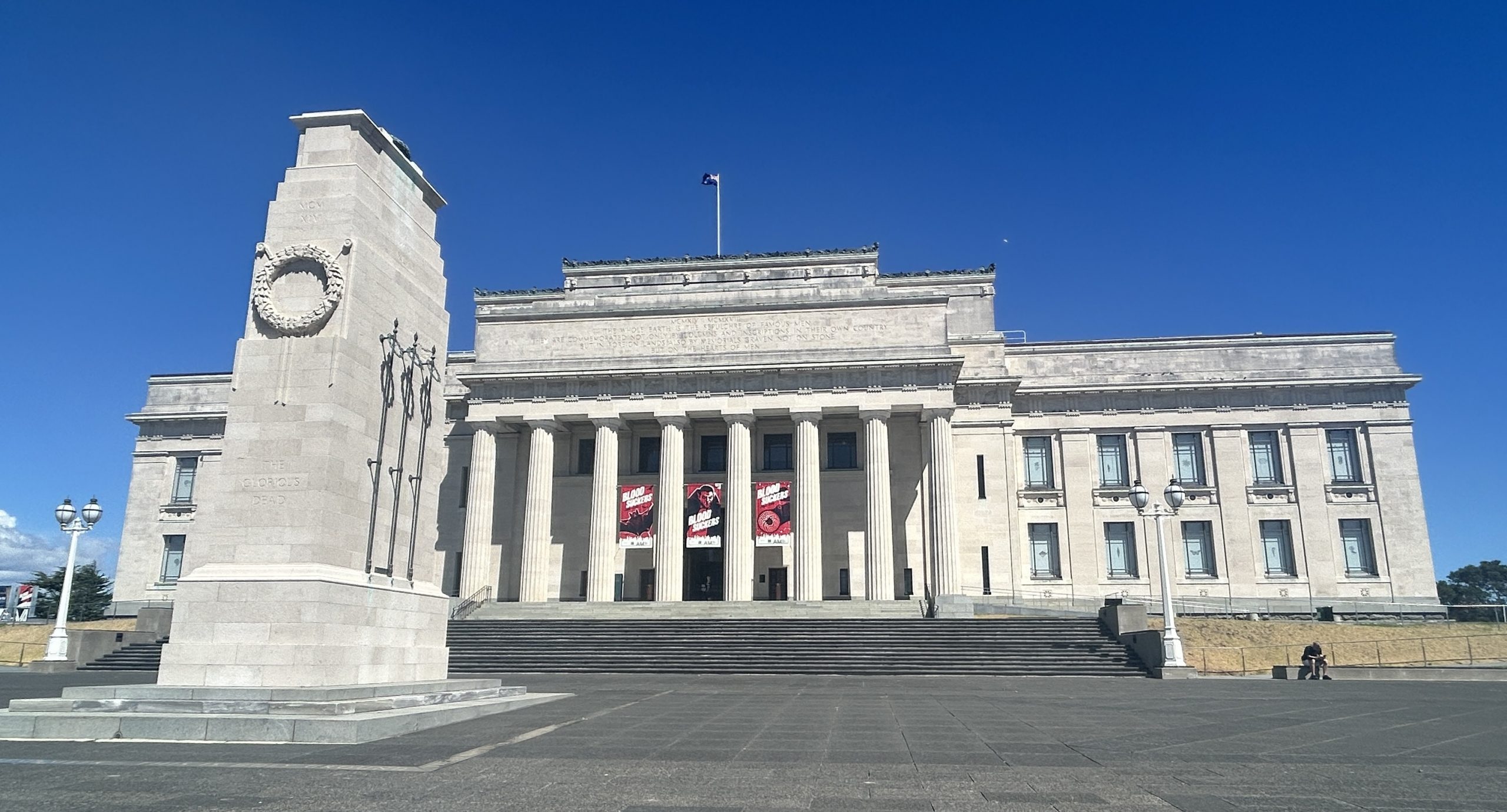
Our final stop on this tour of Auckland was the excellent Auckland War Memorial Museum which sits atop Observatory Hill, another of Auckland’s volcanic cones. Opened in 1929, there was a major addition in 1950 that completed the building’s neo-classical exterior. Standing in front is the New Zealand Cenotaph which you might recognized as a scaled down version of the one in London designed by Edward Luytens, an architect famous for his war memorials. Every April 25 Anzac Day remembrance ceremonies are held at the cenotaph.
This is far more than just a war museum, with artefacts on display from collections that began as long ago as 1852 when the first Auckland Museum opened. There is a large natural history section with many interesting birds including a life size giant moa and a number of other extinct species. The moas make ostriches look like runts and one can only imagine what the New Zealand forests must have been like when they roamed freely through them. The natural history section has more extinct species, these ones long gone before man arrived. For some reason I never thought of New Zealand and dinosaurs at the same time, yet here they are, in three distinct sizes.
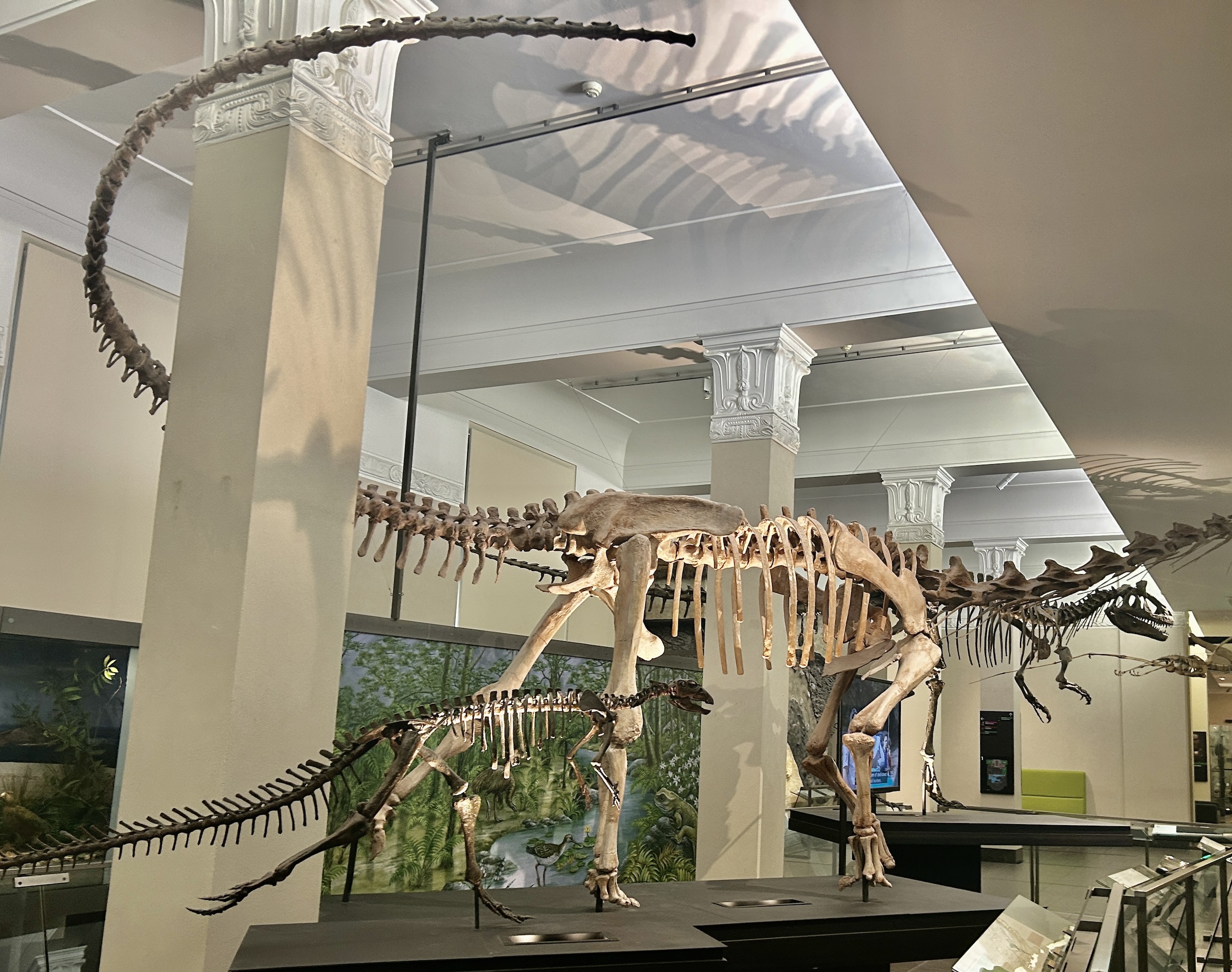
There is also an extensive collection of cultural artefacts from all over Polynesia and two modern day weapons of war I never expected to see in New Zealand. The first is this Spitfire which is in mint condition. It is the Mark XVI which was only developed at the end of WWII and never saw active combat, but was in service until 1956. It was given as a gift to the museum in recognition of the 135 New Zealand pilots who fought in the Battle of Britain, of whom 20 were killed.
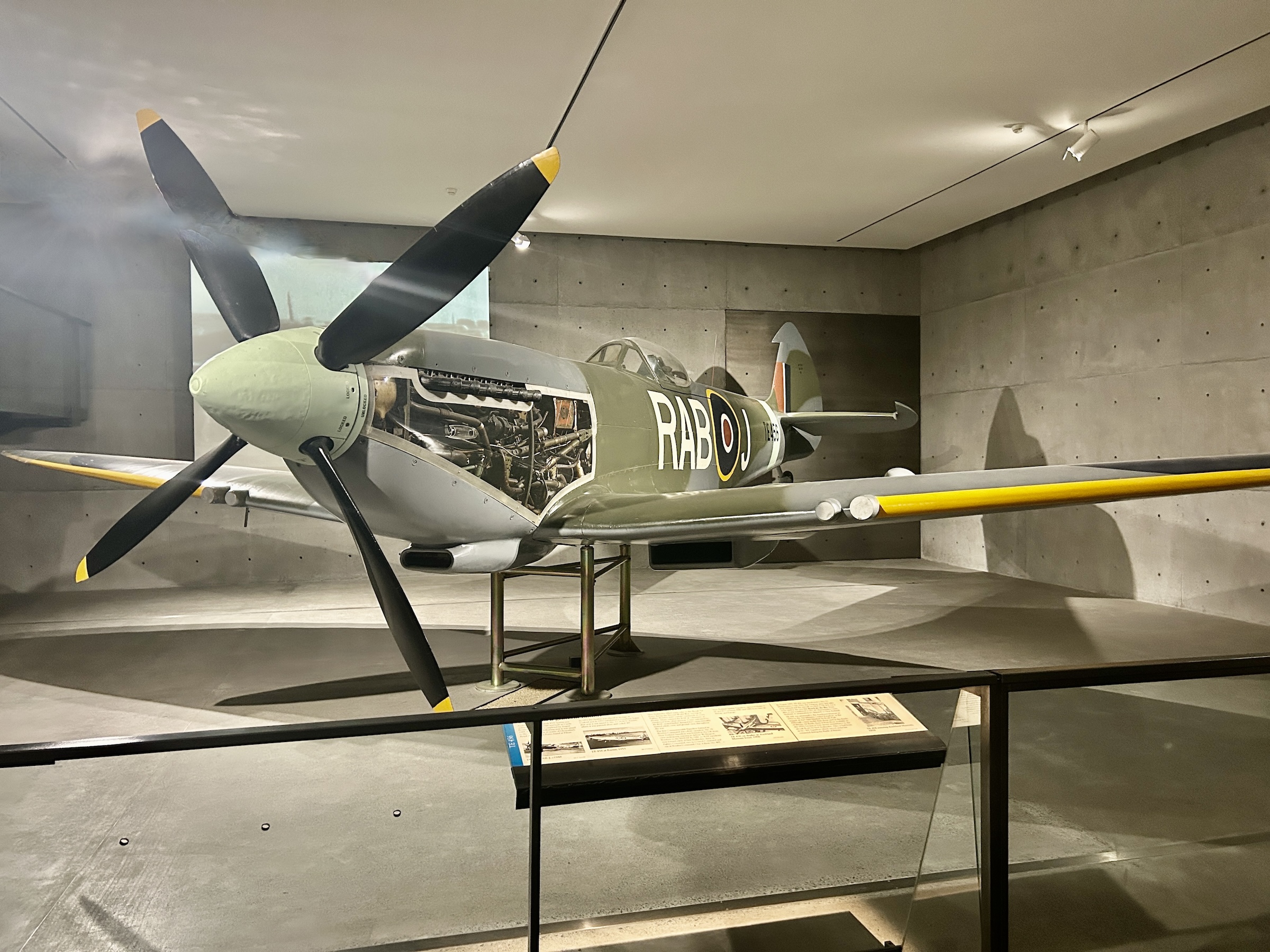
The second is this V-1, aka buzz bomb, which fell on London in 1944 and failed to detonate. I’d never actually see one of these things that unleashed unmanned terror from the skies over seven decades before drone warfare again came into fashion.
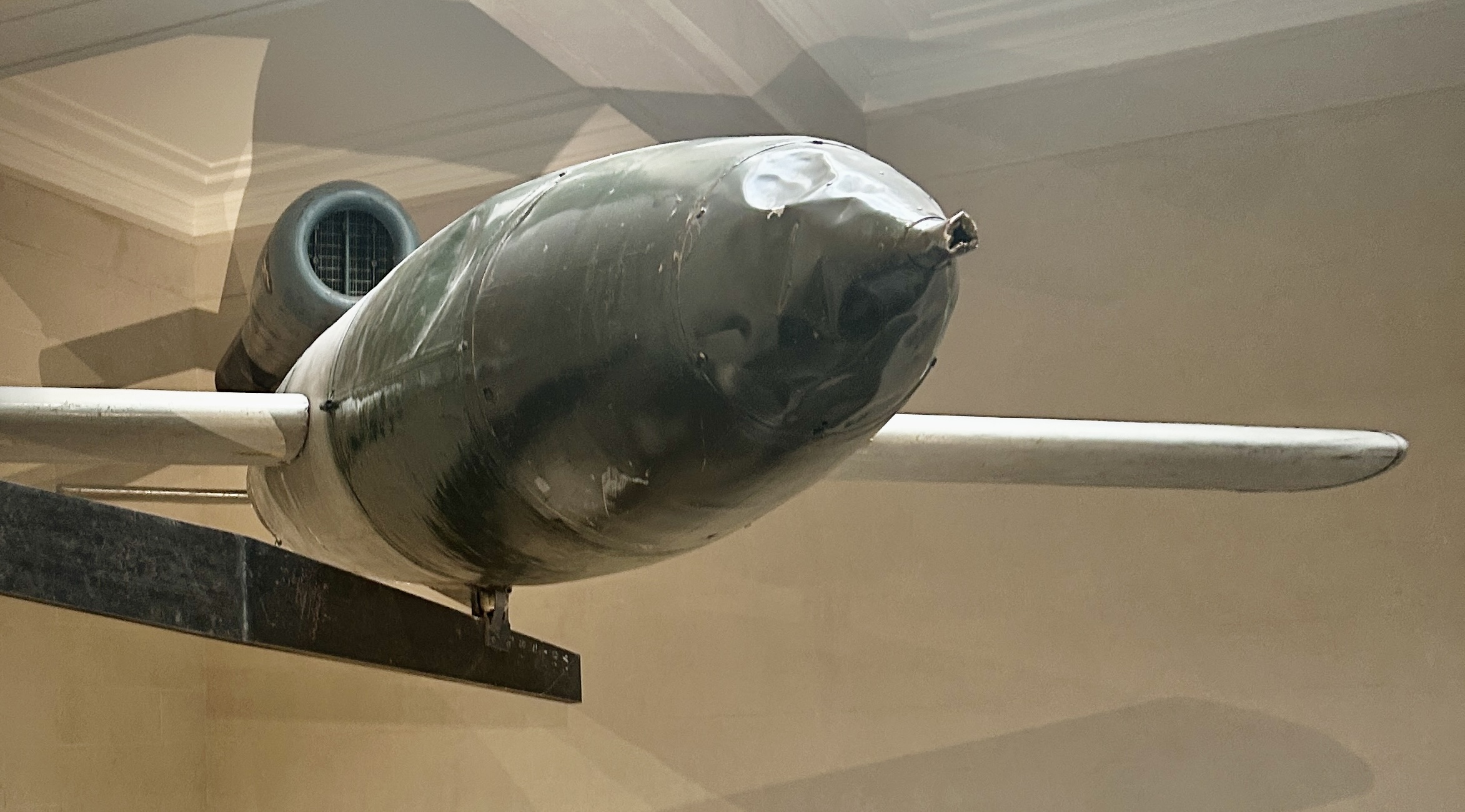
Alison and I had lunch at the nice little restaurant in the museum and then had a leisurely stroll back to the Grand Millenium Hotel where we were based.
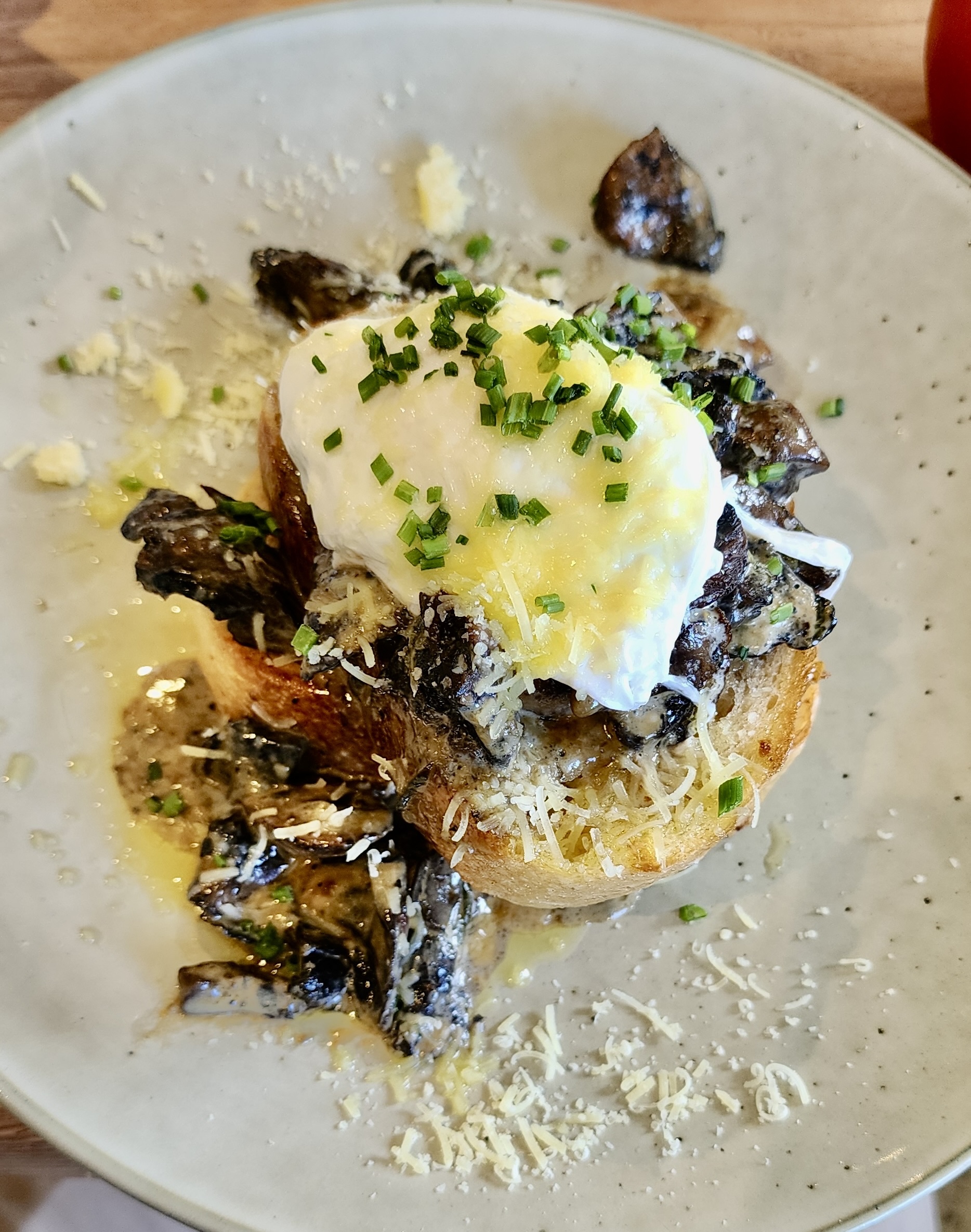
Thus, we barely scratched the surface of the many things to see and do in Auckland, but it was enough to get a sense of why 40% of New Zealanders are glad they live here and 60% are glad they don’t. If you are a city mouse, this is your place. If you are a country mouse, it’s just too big and intimidating.
In the next post Alison and I will begin exploring more of the Northland of New Zealand including Waitangi where the most important document in New Zealand history was signed. Hope you’ll join us.

